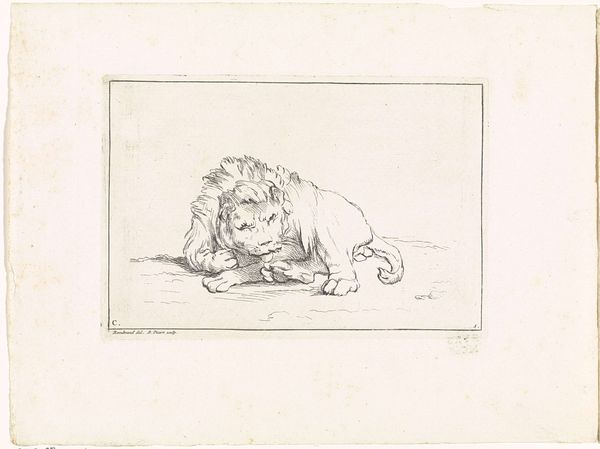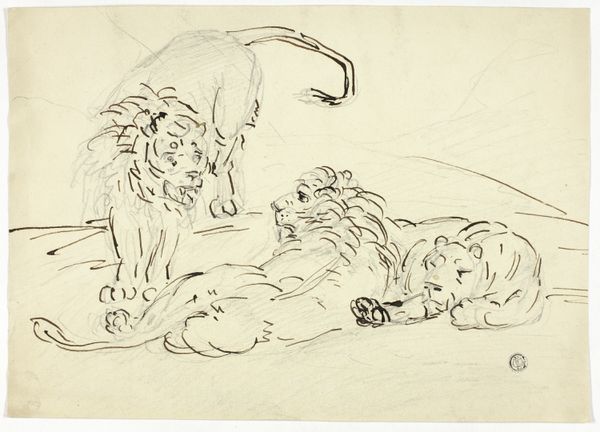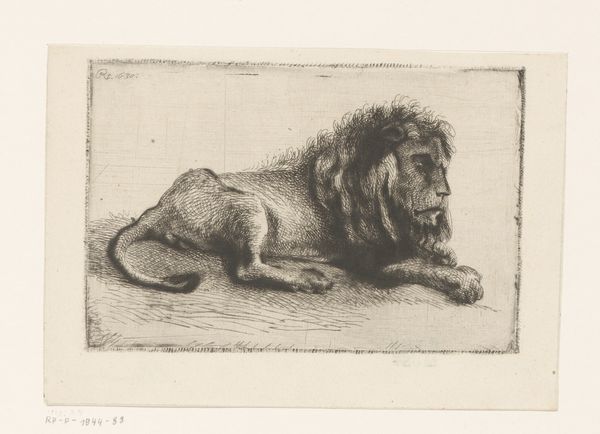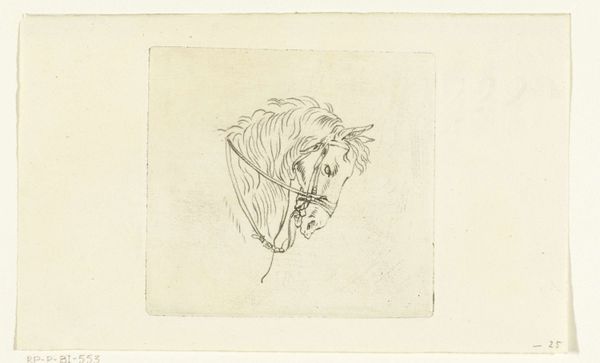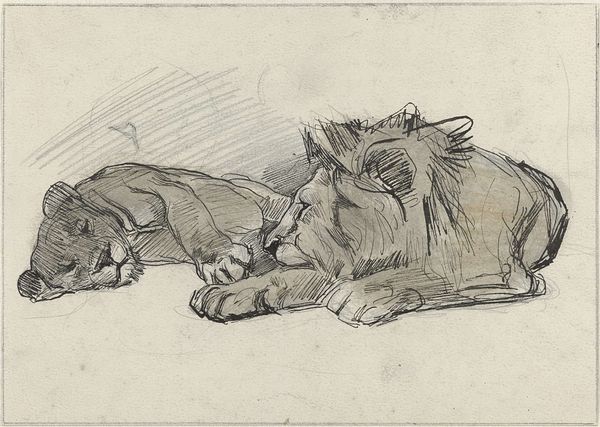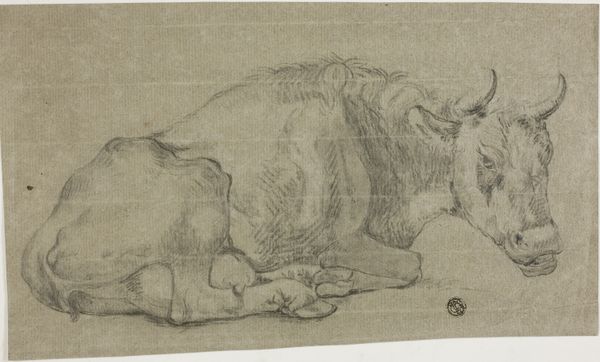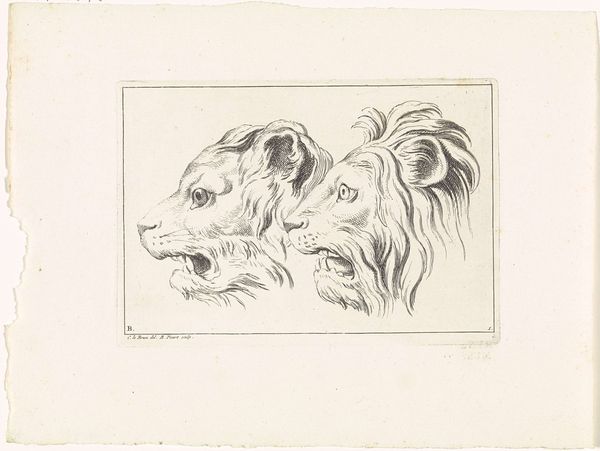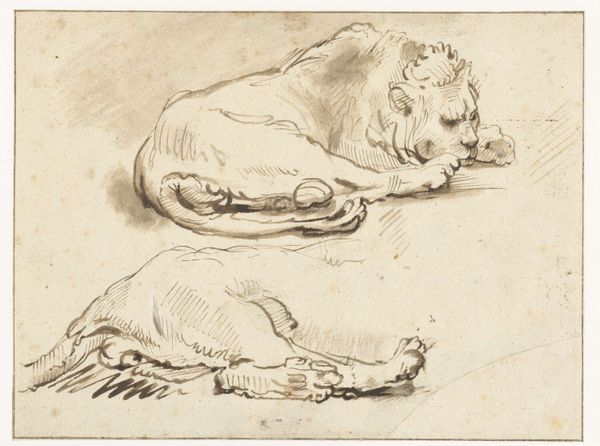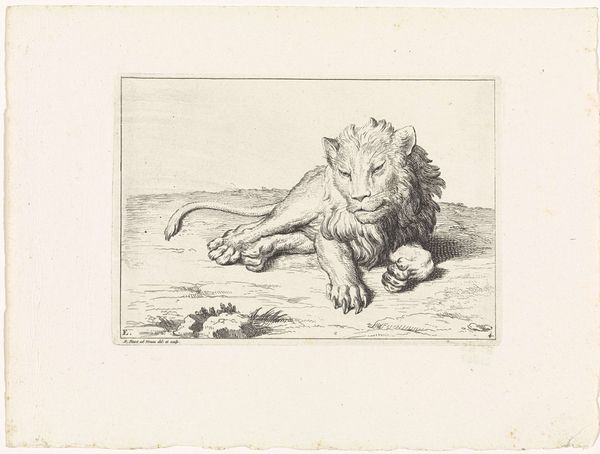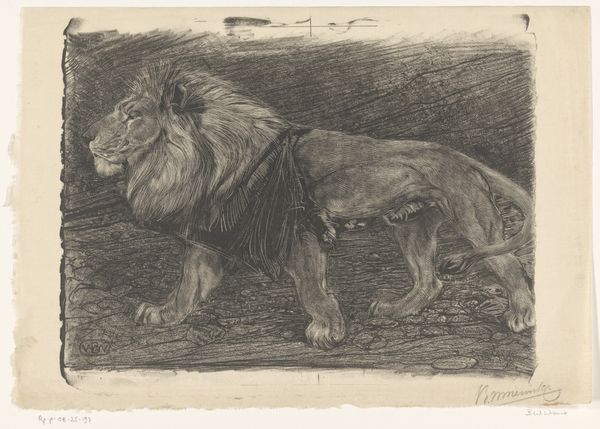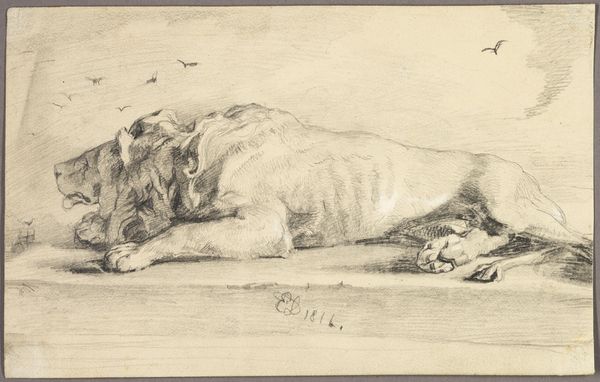
drawing, etching, pencil, engraving
#
drawing
#
toned paper
#
light pencil work
#
animal
#
etching
#
pencil sketch
#
old engraving style
#
personal sketchbook
#
ink drawing experimentation
#
pen-ink sketch
#
pencil
#
sketchbook drawing
#
pencil work
#
sketchbook art
#
engraving
#
realism
Dimensions: height 100 mm, width 170 mm
Copyright: Rijks Museum: Open Domain
Curator: This is "Liggende leeuw," or "Reclining Lion," by Bernard Willem Wierink, created sometime between 1866 and 1924. It's an engraving, a drawing that utilizes both pencil and etching techniques. What are your initial thoughts? Editor: It strikes me as so subdued, almost melancholic. Not the fierce king of beasts we often see represented. It’s fascinating how the light pencil work gives a sense of vulnerability. Curator: Indeed. Lions are often employed in civic and national symbolism. Representations of power. Wierink seems to have sidestepped that trope completely. It begs the question: why this specific pose, this tone? Was this an artist’s reflection, or an appeal to a public disillusioned with displays of pomp? Editor: It makes me consider how depictions of power, even in animals, are gendered and racialized. Think of the historical context—imperialism, colonialism… a resting lion, refusing to perform strength, almost feels like a subversive act of resistance against those visual symbols of dominion. Curator: It’s intriguing to consider its potential connection to the interwar period, if we accept a later creation date. There was significant social and political upheaval in Europe and increased scrutiny surrounding issues of power and class. An image like this could be viewed through the lens of disillusionment, reflecting societal weariness of dominance and spectacle. Editor: And thinking about it more, that signature in the corner feels deliberate. In a way the animal appears to reject those same imperial and masculine ideals that led to such destructive displays. The image seems to push us toward empathy. How do we reshape representations of power to align with justice? Curator: It really allows for varied interpretation doesn't it, highlighting shifting cultural attitudes? What was once merely zoological study may become an appeal for introspection when viewed decades later. Editor: It does offer much more depth when examined critically. Thanks to artworks such as this, our contemporary view on traditional symbolism can really be reshaped for the better.
Comments
No comments
Be the first to comment and join the conversation on the ultimate creative platform.

